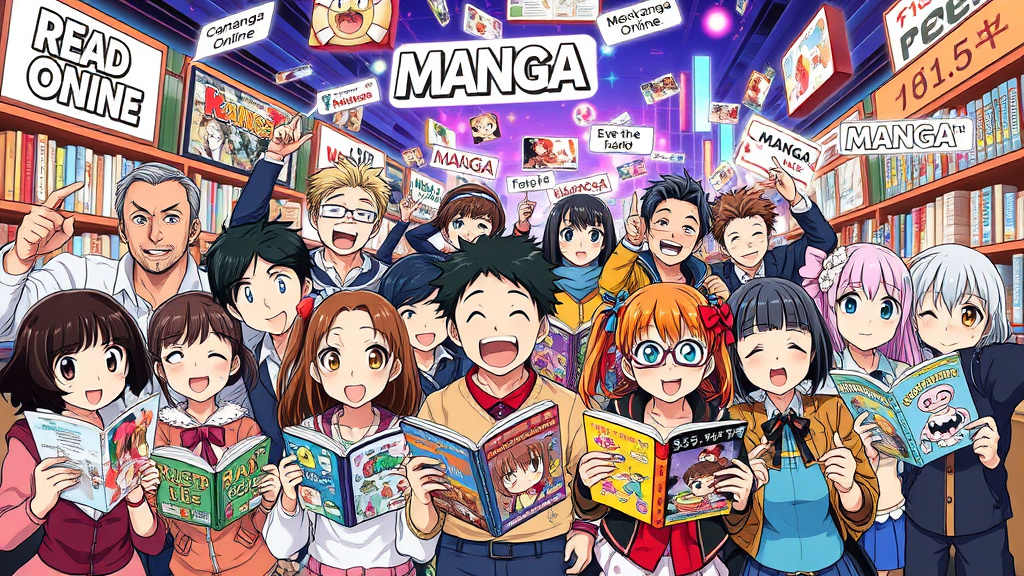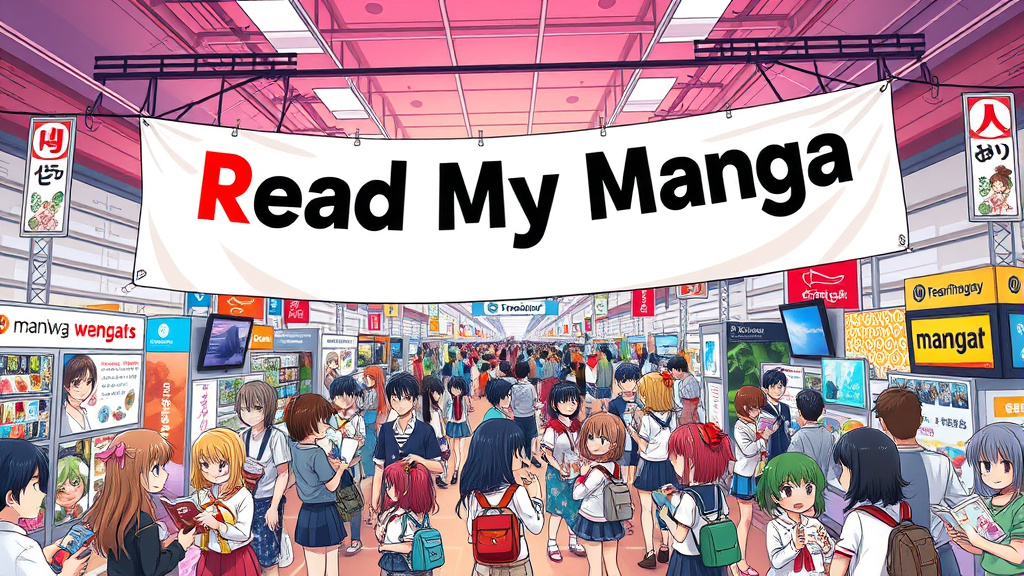anime manga english content has become a cornerstone of the global entertainment landscape. As the reach of Japanese manga and anime expands across continents, the significance of precise translations, cultural sensitivity, and legal access becomes more apparent. From passionate fan communities to mainstream streaming giants, the journey of anime manga english is an evolving story rooted in cultural exchange, technological innovation, and industry challenges. This article explores how anime manga english drives cultural bonds, educates learners, influences pop culture, and faces both opportunities and obstacles along its path.
The Growing Popularity of English-Translated Anime and Manga
The international surge in demand for anime and manga has transformed these Japanese art forms into a global phenomenon. English translations, whether through official channels or fan-made efforts, allow enthusiasts worldwide to experience stories in real-time. This phenomenon expands beyond mere accessibility; it fosters a sense of shared culture and community among diverse audiences. The proliferation of English-translated titles reflects an increased recognition of anime manga english as a cultural bridge, fueling curiosity, fandom, and even academic interest.
Moreover, this growth highlights the power of digital platforms in democratizing access to Japanese media. Social media, streaming sites, and online forums facilitate rapid dissemination and discussion of new releases. The demand for high-quality translations has also prompted industry insiders to prioritize accurate localization. Ultimately, the rising popularity signifies not just a trend but a profound cultural movement that continually reshapes how the world perceives Japanese storytelling through anime manga english.
 Hình minh họa: anime manga english – manga online free english
Hình minh họa: anime manga english – manga online free englishBridging Cultures: How English Dubs and Subtitles Expand Anime and Manga's Reach
Cultural translation is at the heart of anime and manga's international appeal. English dubs and subtitles serve as vital tools for transcending language barriers, making content more accessible, and inviting viewers into complex fictional worlds. Well-executed dubs can convey emotional nuance and character personality, facilitating deeper audience immersion. Conversely, subtitles preserve original voice acting and linguistic subtleties, appealing to purists and linguistically curious fans alike.
The coexistence of both adaptations fosters a broader appreciation of Japanese culture while enabling customization for different viewer preferences. Importantly, localization decisions—such as adapting idioms, humor, and cultural references—can significantly influence the audience’s perception. For many fans, their engagement with anime manga english is not merely about translation but about mediating cultural understanding through these adaptations. This dynamic interplay enhances global connectivity and cultivates a nuanced appreciation of Japanese storytelling traditions.

English Language Learning Through Anime and Manga: A Practical Guide
Many international fans turn to anime manga english as a tool for language acquisition. These entertainment forms offer immersive language exposure, combining visual cues with authentic dialogue, which can boost vocabulary, listening, and comprehension skills. For learners at various levels, engaging with original Japanese content—sometimes with bilingual subtitles—provides valuable context and cultural insights that traditional classroom settings may lack.
Practically, viewers can leverage subtitles to match spoken lines with written forms, fostering deeper retention. Repeated viewing helps internalize speech patterns, slang, and idiomatic expressions unique to anime manga english. For educators, incorporating anime and manga into language curricula can spark increased motivation and foster intercultural competence. While not a substitute for formal study, using anime manga english as a supplementary resource proves an effective method to bridge language and cultural gaps, making language learning both engaging and culturally enriching.
Analyzing Localization Choices: The Impact on English Anime and Manga Adaptations
Localization is more than mere translation; it involves nuanced decisions that shape how international audiences perceive Japanese stories. Choices regarding language tone, cultural references, and character names often reflect a balance between faithfulness to the source material and the needs of the target audience. Sometimes, localization teams adapt gendered language or humorous callbacks to resonate locally, which can enhance or distort original meanings.
These decisions draw controversy, especially when fans perceive a departure from authenticity. In some cases, localization may unintentionally dilute or alter themes, impacting the narrative's integrity. For example, translating culturally specific idioms or humor requires careful consideration to maintain the story’s essence. Analyzing these choices provides insight into how anime manga english adaptations influence reception, cultural perception, and the preservation of Japanese storytelling authenticity within Western markets.
The Role of Fan Subbing and Scanlation in Shaping the English Anime and Manga Landscape
Fan subbing and scanlation—the grassroots community efforts to translate and distribute manga and anime—have played an influential role in the accessibility and popularity of Japanese media outside Japan. These communities often act swiftly to provide translations before official releases, fostering a sense of global fandom and cultural exchange. Their passion and dedication have kept titles alive during delays or restrictions imposed by licensing issues.
However, fan efforts also raise complex questions about legality, authorship, and ethical distribution. While they democratize access and often push industry standards forward, they can inadvertently undermine official licensing revenue and the economic sustainability of localized productions. Nonetheless, these grassroots movements exemplify the power of fan engagement and provide valuable feedback for industry stakeholders to enhance localization and licensing strategies, ensuring anime manga english continues to thrive in a participatory, community-driven environment.
Navigating the World of Legal English Anime and Manga Streaming Services
The advent of legal streaming platforms such as Crunchyroll, Funimation, Netflix, and others has revolutionized access to anime and manga globally. These services provide a curated, high-quality experience, ensuring that fans can enjoy content legally while supporting creators and licensors. Subscription-based models also encourage industry growth by generating revenue that fuels further production and localization efforts.
However, navigating the myriad of licensing agreements, regional restrictions, and monetization models can be confusing. Different platforms often hold exclusive rights to particular series, adding to the complexity of choosing where to watch or read. As the market matures, the emphasis on user-friendly interfaces, diverse language options—including anime manga english—and affordable prices is crucial. These platforms serve as vital gateways in making anime and manga accessible legally and sustainably, reinforcing the importance of supporting official releases and promoting ethical consumption within the anime manga english community.
From Page to Screen: Translating the Nuances of Japanese Culture into English Anime and Manga
Anime and manga are rich tapestries woven with Japanese cultural nuances, traditions, and social values. Translating these subtleties into english requires not only linguistic skill but also cultural literacy. Successfully conveying concepts like hanami (flower viewing), oden (a type of hot pot), or societal norms around honor and hierarchy demands careful localization and contextualization.
Authors and translators often face the challenge of maintaining authenticity without alienating local audiences unfamiliar with Japanese customs. This balancing act influences how cultural identity is preserved or adapted, affecting the audience's understanding and appreciation. A meaningful translation respects the source material’s depth while making cultural aspects approachable. As anime manga english grows more sophisticated, it enriches cross-cultural dialogues and deepens global understanding of Japanese traditions, mythology, and social fabric, broadening the impact of these narratives beyond entertainment.
The Influence of English-Language Anime and Manga on Western Pop Culture
As anime manga english gains prominence, its influence extends far beyond fandom communities, shaping mainstream Western pop culture. Iconic characters, motifs, and storytelling techniques have been adopted into fashion, music, video games, and visual art. For instance, fashion trends inspired by anime characters or references in popular music videos exemplify how these Japanese cultural products evolve into symbols of youth identity and artistic expression.
This cultural permeation fosters reciprocal appreciation; Western creators are increasingly influenced by anime manga english aesthetics and storytelling styles. It creates a dynamic exchange wherein Japanese narratives inform Western media, and vice versa. As a result, anime manga english is not just a passive medium for entertainment but a vibrant force shaping cultural trends and artistic innovation across the globe, cementing its status as a pivotal element of contemporary pop culture.
Challenges and Opportunities in the English Anime and Manga Publishing Industry
The industry faces a complex landscape fraught with challenges such as piracy, declining print sales, and shifting consumer preferences towards digital and streaming content. Publishers must innovate with more immersive digital experiences, subscripted access, and global licensing to stay relevant. Accurate, high-quality English localization remains crucial, as it directly impacts global market penetration and cultural authenticity.
On the opportunity side, increasing worldwide demand for anime manga english translates into expanding markets, new distribution channels, and the potential for increased collaboration between Japanese creators and international publishers. Embracing technological advancements like AI translation, augmented reality, and interactive media could revolutionize how fans consume and engage with content. The industry's future hinges on balancing cultural integrity, legal frameworks, and technological innovation to foster sustainable growth and a richer global appreciation for anime and manga.
A Comparative Study: English vs. Original Japanese Versions of Popular Anime and Manga
The differences between original Japanese versions and their English counterparts often reveal complex layers of translation and localization. Fans debate whether dubbed or translated adaptations honor the authors’ intentions or sacrifice authenticity for relatability. While the original Japanese dialog may contain wordplay, cultural references, or emotional nuances that are challenging to translate, the English versions strive to preserve these elements, sometimes through creative adaptation.
Comparing these versions highlights how translation choices influence character perception, humor, and thematic depth. For example, humor tied to language-specific puns may require rewriting for clarity, risking loss of subtlety. Conversely, some translations excel at capturing cultural context and delivering messages that resonate with Western audiences. Ultimately, this comparative analysis underscores the importance of skilled localization in maintaining the integrity of anime manga english and ensuring stories are appreciated in their full cultural richness.
Conclusion
The evolution of anime manga english reflects a vibrant, interconnected world where cultural exchange, technological innovation, and community participation propel the industry forward. From its role in bridging cultures through dubs and subtitles to serving as an educational tool for language learners, the influence of English translations is profound and multifaceted. Meanwhile, fan communities, legal streaming services, and industry shifts continue to shape how content is produced, localized, and consumed globally. The ongoing balancing act between authenticity and accessibility ensures that anime and manga remain relevant, celebrated, and culturally enriching across borders—an enduring testament to the power of storytelling in fostering global understanding and creativity.





